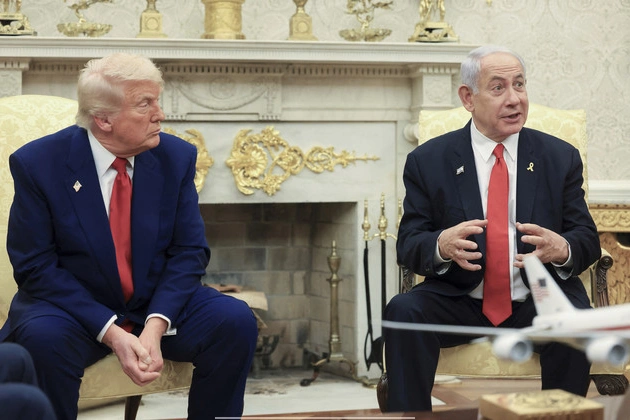
DUBAI, United Arab Emirates (AP) — An F/A-18 fighter jet landing on the USS Harry S. Truman aircraft carrier in the Red Sea went overboard, forcing its two pilots to eject, a defense official told The Associated Press on Wednesday.
The incident that occurred on Tuesday marks the latest mishap to mar the deployment of the Truman, which has been crucial in the airstrike campaign by the United States against Yemen’s Houthi rebels.
Sequence of Events
On Tuesday, U.S. President Donald Trump and Oman’s foreign minister both announced a ceasefire with the Houthis, who allegedly agreed to cease targeting ships in the Red Sea corridor. However, the rebels did not immediately acknowledge this ceasefire.
While the Houthis assess the aftermath of Israeli airstrikes in Yemen’s capital, Sanaa, a tragic landing incident unfolded on the carrier.
Technical Failure
The F/A-18 Super Hornet attempted to land on the Truman after a routine flight, but the arrestment mechanism failed, leading to the jet going overboard. The arrestment system uses steel wire ropes on the flight deck to halt landing aircraft, and the failure point remains under investigation.
Fortunately, the pilots ejected safely and were rescued by a helicopter, sustaining minor injuries. No personnel on the flight deck suffered any harm during this incident.
CNN was the first to report on this unfortunate event.
Previous Incidents
This incident adds to a series of losses the Navy has experienced involving F/A-18 jets. In April, another F/A-18 slipped off the hangar deck of the Truman into the Red Sea. In December, an F/A-18 was mistakenly shot down by the USS Gettysburg. Earlier, the Truman was involved in a collision with a merchant vessel near Port Said, Egypt.
The Truman, stationed in Norfolk, Virginia, has had its deployment extended multiple times due to the ongoing Houthi conflict. Recently, it was joined by the USS Carl Vinson aircraft carrier in the Arabian Sea.
Impact on Sanaa International Airport
The Israeli strike on Sanaa International Airport caused extensive damage, with the terminal and runway suffering significant destruction. Several passenger planes, including those of Yemenia Airways, were destroyed, leaving the airline with minimal operational capacity.
With the airport rendered inoperable, air traffic to and from Sanaa has been severely disrupted, with estimated damages exceeding $500 million.
Houthi Attacks and Ceasefire
The Houthis’ persistent missile and drone attacks on ships in the region aimed to influence Israel’s actions in Gaza. These attacks significantly disrupted trade through the Red Sea corridor, affecting global commerce.
Following a self-imposed ceasefire, the Houthis resumed hostilities after a U.S. offensive in mid-March.











